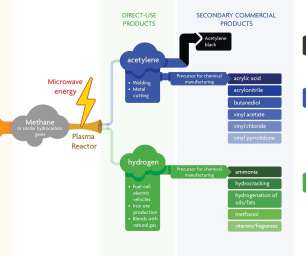Transform Materials plasma process converts abundant natural gas into high-value hydrogen and acetylene
Green Car Congress
SEPTEMBER 30, 2020
Transform Materials has developed a novel and sustainable microwave plasma reactor process to convert natural gas into high-value hydrogen and acetylene, thereby opening up a new pathway for green chemical manufacturing. But methane is extremely inert in an oxygen-free environment and resists chemical reactions.



















Let's personalize your content